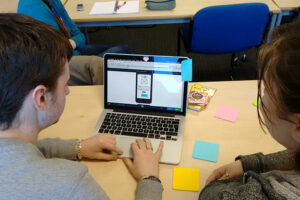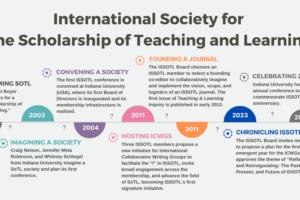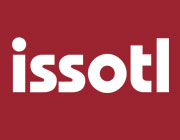Update from the Publications Advisory Committee: ISSOTL Membership Input on Moving Our Journal to an Open Access Format
One of the features of ISSOTL conference this year was two open discussions about future directions for the Society’s journal, Teaching & Learning Inquiry. Sponsored by the Publications Advisory Committee, which oversees the journal’s financial health and sustainability, the sessions attracted approximately 50 people altogether and generated lively exchange about the idea of moving to an Open Access (OA) publishing format in the next year and a half. In general, there was widespread support for such a move, though cautions to keep in mind were expressed as well.
Many participants pointed to the alignment between OA and the values of ISSOTL—its “fit with the mission of community property for teaching and learning work,” as one person put it. Many, too, saw immediate benefits in terms of being able to easily share articles with other faculty and with students, thus increasing the visibility and impact of our work.
There was enthusiasm, too, for what the journal might look like in OA format. Because OA means online only,the journal could include visual elements, links to data, and other features that are difficult or impossible in hard copy.
Some wondered about the impact on membership (since the journal subscription is now a benefit). Might a move to OA negatively impact membership or (as some argued) would the move actually increase membership? The committee was urged to work closely with the Membership Committee to ensure that the journal is seen as one of a (growing) number of member benefits.
Among cautions expressed, concern about the perceived status and rigor of OA publications was clearly high on the list. Several strategies for addressing this concern were proposed. One that the Committee has begun to work on already is the development of an open and explicit statement about the rigor of the TLI review and editorial process. An extended statement could appear at the start of each edition with a brief note in the footer of the first page of each article. For some participants these issues were of less concern, in that they see the journal as a “brand” and one that can lead the way to new models of quality in writing about teaching and learning.
There were questions too about the costs of a move to OA. Those who have experience with such publishing (several OA journal editors attended the sessions) noted that costs are likely to be lower than our current costs (as are the workload demands on editors). And costs, as some pointed out, should not, in any event, be the primary basis for making this decision. One of the most rewarding aspects of the conversation was the generosity of these editors in sharing information and experiences.
The Publications Advisory Committee is grateful to everyone who attended these two sessions and for their candor and constructive exchange. If you were unable to attend, or have further comments to share with the Committee, please contact Pat Hutchings at hutchings.pat@google.com.
Please note that this update is meant to build on the earlier report posted on the ISSOTL website, where you will also find links to OA journals and resources about OA publishing.




